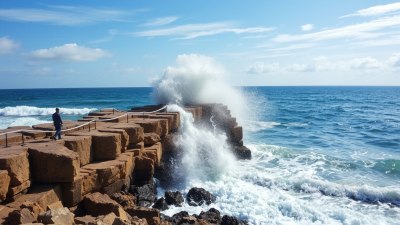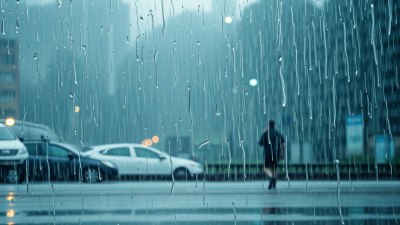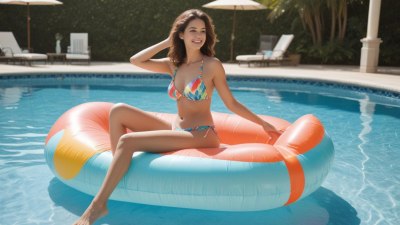How Different Surfaces Affect Local Temperatures
Explore how surface types impact local temperatures and climate variations.

The temperature variations observed in different localities can often be traced back to the diverse surfaces that cover the ground. From urban areas to forests, deserts, and bodies of water, each surface type plays a significant role in how heat is absorbed, retained, and released. Understanding how these surfaces interact with solar energy is crucial for various fields such as urban planning, environmental science, and climate policy.
One of the primary factors affecting temperature is the concept of albedo, which is the measure of how much sunlight is reflected by a surface. Surfaces with a high albedo, like snow or ice, reflect a greater amount of solar radiation and thus retain less heat. Conversely, dark surfaces such as asphalt or ocean water have a low albedo and tend to absorb more solar energy, leading to higher local temperatures. The urban heat island effect is a direct consequence of this phenomenon, where cities with significant areas of asphalt and concrete experience heightened temperatures compared to their rural surroundings.
Urban Areas: A Case Study in Heat Absorption
In metropolitan areas, the combination of buildings, roads, and other structures contributes to higher temperatures. The extensive use of materials like concrete and asphalt, which are known to absorb heat, leads to the phenomenon known as the 'urban heat island' effect. Research has shown that during hot summer days, urban areas can be up to 5 to 10 degrees Fahrenheit warmer than nearby rural areas. This increase in temperature can be significant, impacting local climate and weather patterns. Additionally, cities with more vegetation, such as parks and green roofs, tend to mitigate the urban heat island effect and maintain cooler temperatures.
Forests and Vegetation: Cooling Effects
Forested areas and regions with abundant vegetation exhibit a different thermal dynamic. Plants play a vital role in regulating temperatures through the process of transpiration, where they release water vapor into the air, effectively cooling their surroundings. Moreover, trees provide shade, further reducing temperature fluctuations. Studies have indicated that urban areas which integrate green spaces can reduce surrounding temperatures considerably, improving overall urban climate and enhancing the quality of life for residents. The presence of urban trees and parks often contributes to lower energy costs during hot weather while improving air quality.
Water Bodies: Temperature Regulation
Bodies of water, such as oceans, lakes, and rivers, serve a crucial function in temperature regulation. Water has a high specific heat capacity, meaning it can absorb and store significant amounts of heat without a large increase in temperature. This characteristic allows large water bodies to moderate local climates, particularly in coastal regions. For example, coastal cities often enjoy milder climates than inland cities due to the temperature-regulating effects of nearby oceans. Similarly, areas close to large lakes benefit from the cooling effects of water in the summer and slight warming during winter months.
Desert Regions: Extreme Temperature Variations
In contrast to forests and water bodies, desert regions experience extreme temperature variations, primarily due to their lack of vegetation and moisture. The sandy or rocky surfaces of deserts have a very low albedo, absorbing intense heat during the day, which can lead to extremely high temperatures. However, at night, these surfaces lose heat quickly, resulting in significant drops in temperature. This phenomenon highlights the drastic effects of surface types on local climates and how different materials respond to solar energy differently.
Impact of Surface Change over Time
Land use changes over time can dramatically alter local temperatures. As countries urbanize and develop, natural landscapes are often replaced with artificial surfaces that absorb and retain more heat. This shift not only enhances local temperatures but can also lead to broader climatic consequences. For instance, deforestation in tropical regions has been linked to an increase in local temperatures, as trees that once contributed to cooling through shade and transpiration are removed.
Climate Change and Surface Interaction
Climate change exacerbates the effects of different surfaces on local temperatures. As global temperatures rise, surfaces that previously had a moderating impact are becoming less effective. For example, melting ice in polar regions decreases the albedo effect as darker ocean waters are exposed, absorbing more heat and further accelerating warming. This cycle of feedback can lead to more extreme weather patterns and increased temperature fluctuations in various localities.
Mitigation Strategies
Addressing the effects of surface types on local temperatures necessitates comprehensive mitigation strategies. Urban planners can implement solutions such as green roofs, reflective materials for pavements, and increased vegetation in city planning. Additionally, promoting sustainable land use practices can help preserve forests and wetlands that contribute to cooling. Climate initiatives that focus on enhancing greenness in urban spaces and protecting natural environments will be critical in combating the adverse effects of rising local temperatures.
In summary, the different surfaces covering the earth's land masses significantly affect local temperatures through mechanisms such as heat absorption, albedo, and vegetation influence. The impact of urbanization, deforestation, and climate change presents ongoing challenges to maintaining comfortable and sustainable temperatures in various regions. It is essential to consider the implications of surface types and their interactions with solar energy to formulate effective climate strategies and enhance the resilience of communities against temperature fluctuations.











